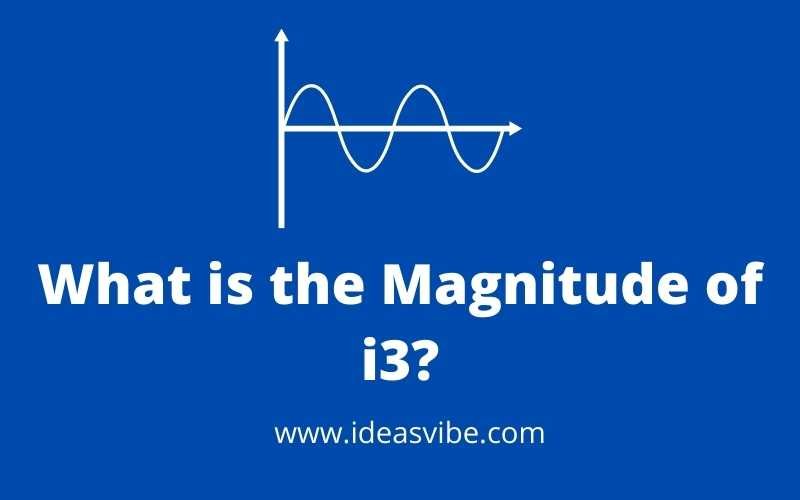
If you have ever wondered what is the magnitude of i3, you have come to the right place. This article will explain the educational and statistical significance of the i3 metric. It will also explain the significance of the i3 metric for various purposes. Let’s take a look at some examples. And don’t forget to share your thoughts and views in the comments section. I hope you found this article useful.
Table of Contents
i3
The answer to the question, “What is the magnitude of i3?” will depend on how you interpret a graph of an electrical circuit. Specifically, this term refers to the amount of work needed to move a charge from one point of a conductor to another. In other words, the magnitude of i3 is 1.86AA?10Tm. As with all other types of graphs, its practical and educational significance will depend on the corresponding unit.
The statistical significance of i3
The Statistical significance of i3 is a useful tool to analyze citation rates and impact. It allows users to choose from various options and tests heterogeneous sets. This tool has numerous uses and can be applied to many different types of data. For example, it can be used to calculate the percentage of citations for whole-number-counted and fractionally-counted publications. In addition, it is based on the impact factor and is highly correlated with JIF2 and JIF5.
I3 values are calculated for articles in a specific journal or a set of journals. The number of articles in a given journal can be aggregated into a range of percentiles, which are used to compare countries and institutions. The US-NSF uses six ranks, while the UK RAE uses four-plus classes. In addition, I3 values can be calculated using fractional citation scores. The following sections will discuss how these indices are used in practice.
Although I3 values can be used for comparison across databases, users may also want to include non-source references and grey literature in their WoS. In any case, the reference set must be defined. The analyst must understand that each set represents a sample. This makes impact values sample-dependent. This fact should be noted before implementing an impact metric. And in summary, the Statistical significance of i3 is useful in many research applications.
The educational significance of i3
The Federal Education Department has pushed for an evaluation of the program’s educational significance in the coming months. i3 was intended to build a pipeline for educational innovation in K-12 settings, which other sectors often take for granted. But the program was far from perfect. The program’s scoring system has been questioned, and prospective applicants sometimes didn’t understand how much evidence they needed to present to receive funding. Even so, it’s worth mentioning that the Education Department has also been doing outreach and preliminary reviews to ensure that the program is a success.
While the goal of the program was to spur innovation and evidence-based practices, some critics questioned whether the initiative was really innovative, given that programs like the Knowledge Is Power Program charter network and Teach for America have been in existence for decades. However, Chinoy Dabby, the deputy secretary of education, and Michael Shelton, the secretary of education, defended the program’s goals, saying that it wanted to support the most promising programs.
Also Read:
The Secret of LOW CODE APP DEVELOPMENT
5G Network Not Showing Up how to fix it.
While i3’s tiered-evidence framework was not the first to be adopted as the standard for educational innovation, researchers are increasingly recognizing reformers’ difficulties. Some are interpreting the equivocity in the evaluation results as legitimate and an invitation to delve deeper into the field of educational innovation. In fact, some researchers are now looking at how to evaluate educational innovation and figuring out which programs work and why they do. And WestEd’s two unofficial ratings maybe eventually be given official WWC status.


